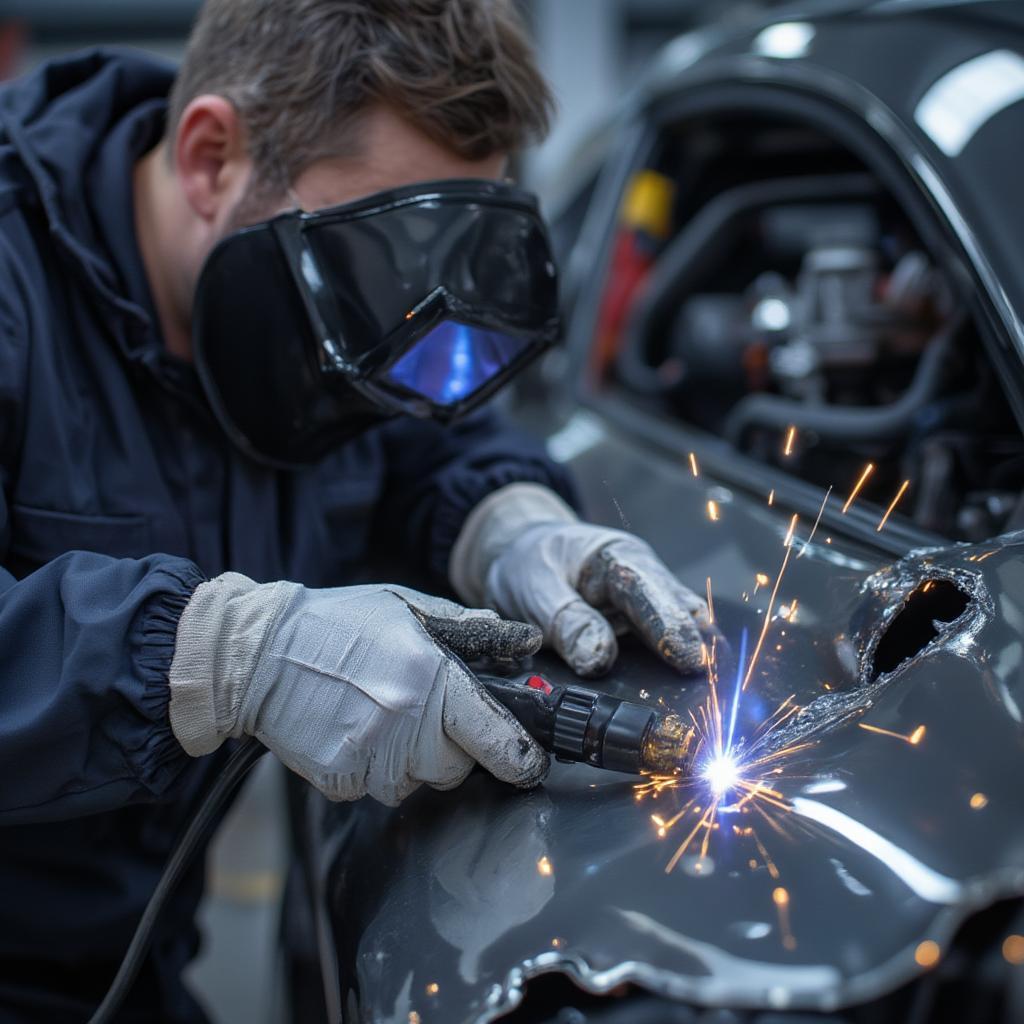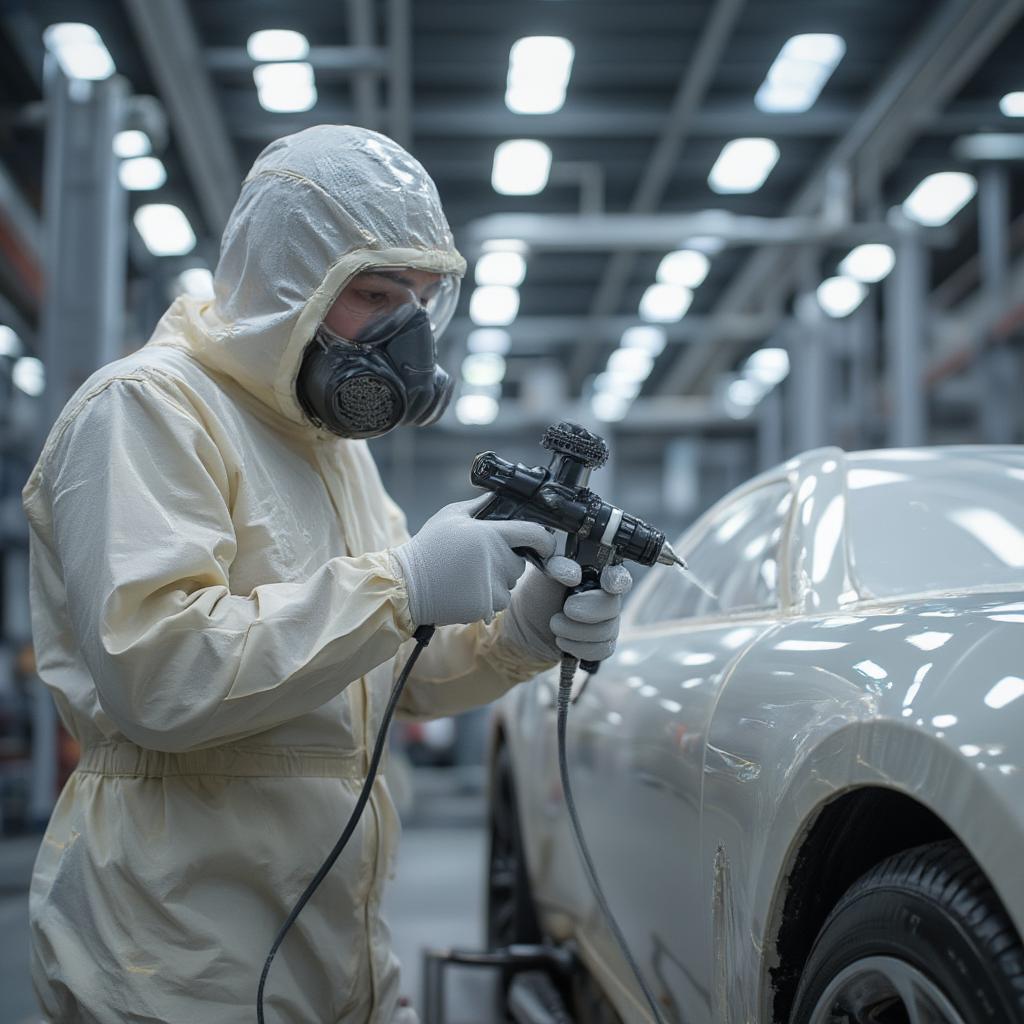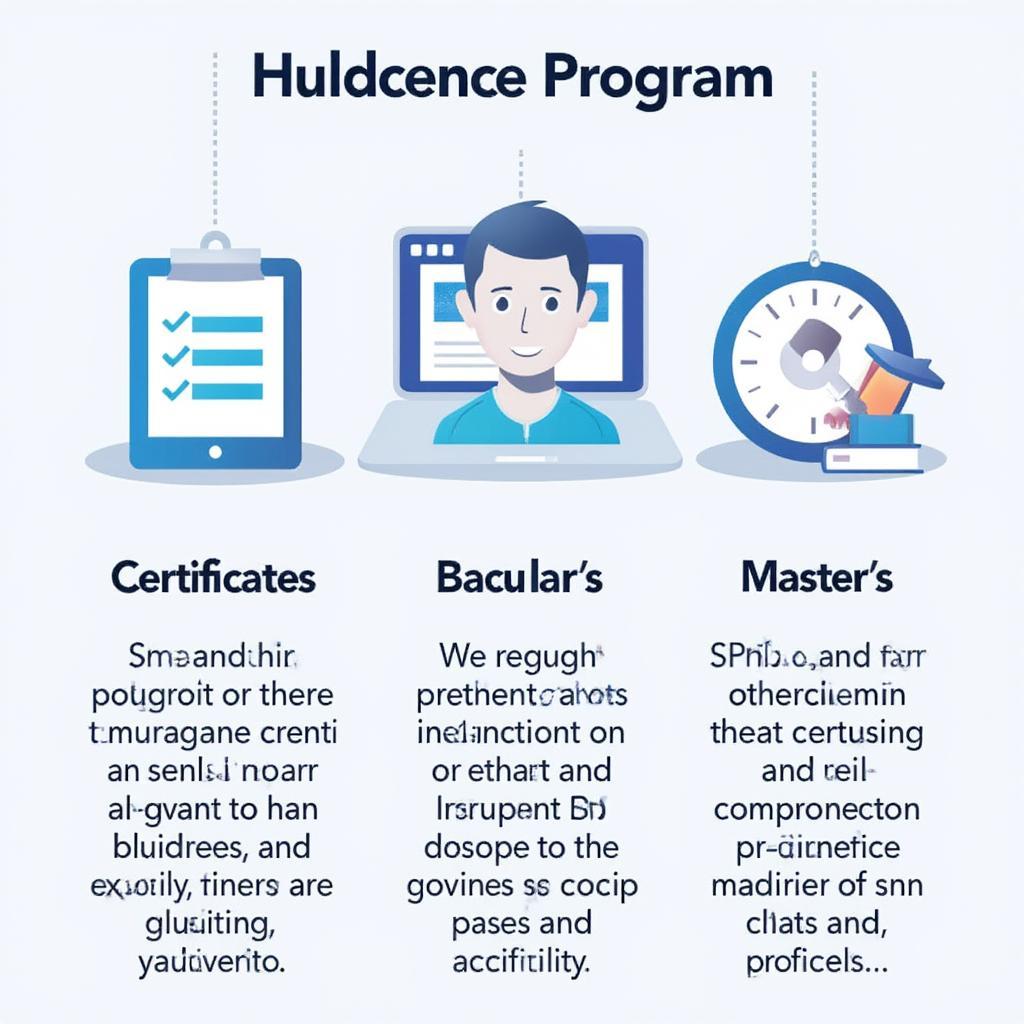Mastering the Craft: A Comprehensive Guide for the Aspiring Body Repair Technician

The world of automotive repair is constantly evolving, demanding skilled professionals who can not only fix mechanical issues but also restore vehicles to their pre-accident glory. A career as a body repair technician offers a blend of hands-on work, technical expertise, and creative problem-solving. This comprehensive guide will walk you through the essential aspects of becoming a proficient body repair technician, the necessary training, and the opportunities this field offers. Let’s dive in and explore what it takes to excel in this dynamic industry.
What Does a Body Repair Technician Actually Do?
A body repair technician, sometimes referred to as an auto body technician, is responsible for repairing and refinishing vehicle bodies that have been damaged in collisions or other accidents. Their work involves more than just hammering out dents; it requires a deep understanding of vehicle structures, materials science, and the application of sophisticated repair techniques. The scope of work includes:
- Damage Assessment: Thoroughly inspecting vehicles to identify the extent of damage and determine the most appropriate repair methods. This often includes using specialized tools to measure frame alignment and assessing structural integrity.
- Body Panel Repair: Straightening or replacing damaged panels, using various tools such as hammers, dollies, and welding equipment. This requires precision and attention to detail to restore the vehicle’s original shape.
- Welding and Fabrication: Cutting, fitting, and welding replacement parts using various welding techniques. This skill is crucial for repairing structural components and ensuring the safety and integrity of the vehicle.
- Surface Preparation: Preparing vehicle surfaces for painting, including sanding, filling, and priming. This step is essential for achieving a flawless paint finish and requires a meticulous approach.
- Painting and Refinishing: Applying paint using spray guns and matching the vehicle’s original color. This step demands a combination of artistry and technical skill to ensure a seamless finish.
- Final Inspection and Assembly: Ensuring that all repairs meet industry standards and reassembling the vehicle’s body components. A final check for fit, finish, and functionality is essential before handing the car back to the customer.
The Importance of Precision and Attention to Detail
The work of a body repair technician demands high levels of precision and attention to detail. Even a small oversight during the repair process can lead to future problems, compromising both the aesthetics and safety of the vehicle. From perfectly aligning panels to achieving an exact color match, every step requires focus and a commitment to quality. As expert mechanic, Johnathan Davies says, “The difference between a good repair and a great one lies in the details. The ability to be precise and meticulous is what sets apart a true professional in this field.” This commitment to detail ensures that the repaired vehicles not only look fantastic but also provide optimum safety for drivers. To understand more about precision in this field, consider exploring auto body repair technician training.
Essential Skills for a Successful Body Repair Technician
To succeed in this career, aspiring body repair technicians need a blend of technical and soft skills. Technical skills are the foundation, while soft skills enable you to work effectively and interact positively with customers and colleagues. Here are some key skills:
- Mechanical Aptitude: A solid understanding of how vehicles are constructed and how their components work is vital. This allows a technician to make informed decisions about repair methods.
- Hands-on Dexterity: The ability to work with precision using a variety of hand and power tools is essential. From welding to sanding, a technician’s hands are their most crucial instruments.
- Problem-Solving Skills: Being able to identify and solve complex repair issues is crucial. Each damage scenario is unique, requiring a technician to think critically and devise effective repair strategies.
- Attention to Detail: Every step in the repair process requires precision and accuracy. A meticulous approach is necessary for achieving high-quality results.
- Communication Skills: Effective communication is vital for explaining repairs to customers, discussing work orders with colleagues, and maintaining a professional demeanor.
- Time Management: The ability to manage time and complete repairs efficiently is critical. Body repair shops operate under deadlines and require technicians who can stay organized and productive.

Staying Current With Industry Trends
The automotive industry is constantly evolving with the introduction of new materials, technologies, and repair methods. Therefore, continuous learning is essential for a body repair technician to stay current. This involves:
- Regular Training and Certification: Participating in training programs and seeking relevant certifications helps technicians to stay updated with the latest advancements.
- Keeping Up With New Materials: Modern vehicles use advanced materials like aluminum and carbon fiber, requiring specialized repair techniques. A commitment to continuous learning ensures technicians can handle any type of repair.
- Mastering New Technologies: Computerized measuring systems and advanced welding equipment are becoming more common in repair shops. Staying updated with these technologies enhances the technician’s capability to provide superior repairs.
- Industry Publications and Trade Shows: These resources provide the latest insights and trends in the industry, keeping technicians informed about new tools and techniques.
As veteran auto body repair specialist, Mark Harrison says, “The automotive industry never sleeps, so as a technician, neither can you. Staying ahead requires continuous learning, skill development, and a willingness to embrace new technologies.” These are important things to keep in mind as you move forward with your training. If you are looking for more resources, you should explore automotive repair training.
The Training Path to Becoming a Body Repair Technician
Becoming a skilled body repair technician requires a combination of formal training and on-the-job experience. Here’s a typical educational path:
- Vocational Programs: Many vocational schools and community colleges offer programs specifically designed for auto body repair. These programs usually take one to two years and cover the fundamentals of auto body repair. These courses will give you a solid foundation in the basic repair techniques, materials science, and safety protocols, setting you up for success in the industry.
- Apprenticeships: Participating in an apprenticeship program is a great way to gain hands-on experience while being mentored by experienced technicians. These programs typically combine classroom learning with on-the-job training, providing practical experience and a deeper understanding of the industry.
- On-the-Job Experience: After formal training, technicians will need hands-on experience in a repair shop to develop and refine their skills. This is where you will perfect your techniques, learn to apply your knowledge in different situations, and gain confidence. Starting as an entry-level technician can be a great stepping stone in your career.
- Certifications: Many certification programs, such as those offered by I-CAR (Inter-Industry Conference on Auto Collision Repair) and ASE (Automotive Service Excellence) allow technicians to prove their skills and enhance their marketability. Certifications validate your skills and knowledge and can open up additional opportunities for career advancement.
What to Expect During Your Training
Your training will include both classroom instruction and practical, hands-on learning. In the classroom you will cover theoretical topics such as:
- Vehicle Anatomy: Detailed understanding of vehicle structures, panels, and components, which is vital for accurately assessing and repairing damage.
- Materials Science: Learning about different materials used in vehicle construction, including steel, aluminum, plastics, and composites. It’s important to understand their properties and how to repair them.
- Welding Techniques: Mastering various welding techniques, including MIG, TIG, and spot welding, to repair or fabricate metal parts. Proper welding is crucial for maintaining structural integrity of the vehicle.
- Painting and Refinishing: Studying the processes of surface preparation, color matching, and paint application techniques, essential for achieving a perfect finish.
- Safety Procedures: Learning safe working practices to minimize the risk of accidents, covering everything from using tools to handling chemicals.
The practical aspect of your training will allow you to:
- Repair Damaged Panels: Practicing repair techniques on damaged panels to develop the skills needed to straighten, patch, and replace metal sections.
- Weld Vehicle Components: Gaining experience in welding various components, including body panels, brackets, and structural parts.
- Apply Paint: Using spray equipment to apply primers, sealers, base coats, and clear coats, to perfect your application skills.
- Use Specialized Tools and Equipment: Learning how to properly use various tools and equipment, from hammers and dollies to paint guns and frame straightening machines.
This blend of theory and practical experience will ensure you’re fully equipped to start your career as a Body Repair Technician. If your looking for training options near you, you should investigate auto body technician near me.

Career Opportunities and Growth
The demand for skilled body repair technicians is consistently strong, with a range of career paths and growth opportunities available. Here are a few of the options you might pursue:
- Entry-Level Technician: Starting as an entry-level technician in an auto body shop is a great way to gain experience and begin your career.
- Senior Technician: With experience and training, technicians can advance to senior positions, where they are often responsible for supervising other technicians and taking on more complex repair tasks.
- Estimator: Some technicians with strong analytical skills and good communication can become estimators, who assess the damage and provide cost estimates to customers and insurance companies.
- Shop Foreman or Manager: With experience and leadership qualities, technicians can move into management roles, overseeing the operations of a repair shop.
- Specialized Technician: Some technicians choose to specialize in specific areas, such as welding, painting, or working with specific types of vehicles, such as high-end cars or electric vehicles.
The Impact of Technology on the Future of Body Repair
The automotive repair industry is undergoing significant transformations thanks to advanced technologies such as:
- Advanced Driver Assistance Systems (ADAS): ADAS features on modern vehicles require technicians to recalibrate sensors and cameras after repairs. Technicians must be familiar with these new processes to ensure vehicles are safe to operate after being repaired.
- Electric and Hybrid Vehicles: The increase in electric and hybrid vehicles has required technicians to stay up-to-date on how to repair these cars, including training on battery systems and electronic controls.
- Robotics and Automation: Automated systems are becoming more common in body shops, requiring technicians to learn how to operate and integrate these technologies in their work process.
- 3D Printing: 3D printing may eventually be used to create custom parts, reducing reliance on suppliers and speeding up the repair process.
As technology advances, body repair technicians must evolve their skills to remain effective and competitive. This will involve continuous learning, certification, and adapting to new tools and techniques. One such organization, tech 11 auto repair, is an industry leader when it comes to new technologies.
Conclusion
A career as a body repair technician is both challenging and rewarding, offering a blend of technical skills, hands-on work, and creative problem-solving. By gaining proper training and hands-on experience, you can become a valuable asset in the automotive repair industry. This field is constantly evolving, requiring a commitment to continuous learning and a willingness to adapt to new technologies. If you’re passionate about cars and enjoy hands-on work, a career as a body repair technician could be the perfect choice for you. The industry needs detail-oriented, tech-savvy professionals to help keep our roads and vehicles looking amazing.
Frequently Asked Questions
1. What is the difference between a body repair technician and a mechanic?
A body repair technician specializes in the repair of vehicle bodies, including panels, frames, and paintwork. A mechanic, on the other hand, focuses on the mechanical components of a vehicle, such as engines, transmissions, and brakes.
2. How long does it take to become a fully qualified body repair technician?
It generally takes one to two years to complete a vocational program, followed by an apprenticeship or several years of on-the-job experience. The total time to full qualification can range from 3 to 5 years.
3. What kind of tools and equipment do body repair technicians use?
Body repair technicians use a variety of hand tools like hammers, dollies, and sanders, as well as power tools including welding equipment, spray guns, and frame straightening machines. Specialized measuring tools are also used to assess damage and ensure proper alignment.
4. Is physical strength a major requirement for a body repair technician?
While some tasks require physical strength, technique and proper tool use are far more important. The job can be physically demanding, but proper training and the use of safety equipment can help minimize the risk of injury.
5. Are there many job opportunities for body repair technicians?
Yes, the demand for skilled body repair technicians is consistently strong. The industry is always looking for well-trained individuals who can provide quality repairs.
6. What are the most challenging aspects of being a body repair technician?
The most challenging aspects often involve dealing with complex or unique damages that require a combination of problem-solving skills, technical knowledge, and experience. In addition, keeping up with new vehicle designs, technologies, and materials, requires a commitment to continuous learning.
7. How important is it for body repair technicians to stay up-to-date with new technology?
It’s crucial. The automotive industry is constantly evolving, with the introduction of new materials, technologies, and repair methods. Body repair technicians must adapt and stay current through continuous training and education to remain effective.
8. What type of environment do body repair technicians typically work in?
Body repair technicians typically work in auto body shops or dealerships, which can be noisy and require working with power tools and chemical compounds. They generally work indoors, often in well-ventilated workshops to minimize exposure to fumes and dust.
9. What are some options for advancing my career as a body repair technician?
There are several paths for career advancement. You could become a senior technician, an estimator, a shop foreman or manager, or specialize in specific areas like welding or painting. Continuously seeking training and certifications can help unlock further advancement opportunities.




